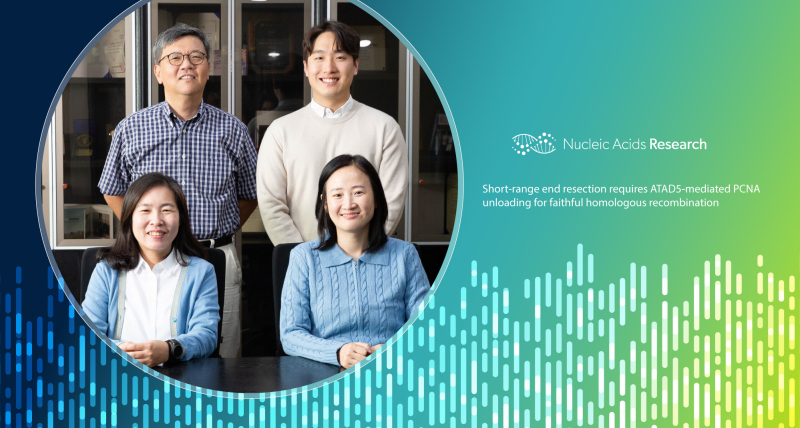Led by Distinguished Professor Kyungjae Myung, Director of the Center of Genomic Integrity (CGI) with in the Institute for Basic Science (IBS) at UNIST, the research teams of Professor Kyoo-young Lee (College of Medicine, Hallym University) have unraveled a critical mechanism involved in the DNA repair process. The findings shed light on the regulation of DNA damage recovery, with implications for understanding and potentially treating breast and ovarian cancers.
When DNA double helix cutting occurs, it poses a severe threat to genomic stability. To counter this, cells activate a homologous recombination repair system, which minimizes repair defects and mutations. However, malfunctioning of this system can lead to various complications, including cancer development.
The research team focused on understanding the finely regulated stages of homologous recombination repair. They discovered that the cancer-suppressing protein ATAD5 plays a pivotal role in the initial stage of the process known as DNA end resection. Terminal resection removes specific proteins bound to the DNA end, creating the necessary structure for subsequent repair steps.
Through meticulous experiments, the team observed the movement of the PCNA protein, involved in DNA replication, in real-time using fluorescent labeling. They found that PCNA rapidly binds to the DNA gap formed by the MRN protein complex immediately after double helix cutting. However, with the presence of ATAD5, PCNA is subsequently unloaded from the DNA, allowing for the completion of short-range DNA end resection.
Furthermore, the team discovered that failure to unload PCNA impairs subsequent steps such as the removal of terminal binding protein KU70/80 and DNA repair synthesis, ultimately leading to reduced frequency of homologous recombination. Cells under these conditions resort to alternative, error-prone DNA repair pathways, resulting in increased mutations and compromised genomic stability.
The groundbreaking research, published in the prestigious journal Nuclear Acids Research on September 22, provides valuable insights into the precise regulation of DNA repair. Understanding the role of ATAD5 in homologous recombination opens up new avenues for developing targeted therapies for breast and ovarian cancers, where DNA repair processes are critical.
Distinguished Professor Kyungjeong Myung expressed his excitement about the findings, stating, “This research deepens our understanding of the DNA repair process and highlights the importance of ATAD5 in maintaining genomic integrity. We hope that our discoveries will contribute to the development of novel strategies to combat cancer.”
Journal Reference
Su Hyung Park, Namwoo Kim, Nalae Kang, et al., ‘Short-range end resection requires ATAD5-mediated PCNA unloading for faithful homologous recombination,’ Nucleic Acids Res., (2023).












